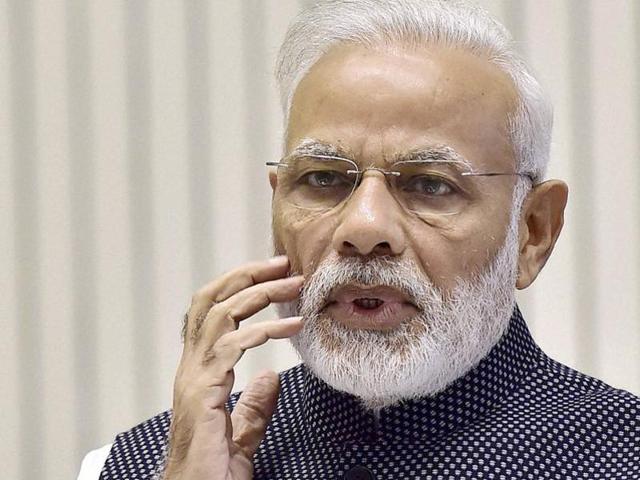Demonetisation: Modi has banked on personal equity to effect behaviour change
It is clear that the implementation of the demonetisation exercise has left a lot to be desired. The government seems to be framing rules as it goes along and that is never a good thing
On November 8, Prime Minister Narendra Modi made an unscheduled televised address to the nation at 8 pm.

No one had any idea what he was going to talk about. Sure, there had been rumours of a new Rs 2,000 denomination banknote in the works — many of the rumours gave this new currency note near mythical properties — but no one expected Modi to speak about that.
As it turned out, the Rs 2,000 denomination note did feature in the prime minister’s speech during which he announced what was effectively a demonetisation exercise by rendering existing Rs 500 and Rs 1,000 denomination notes invalid.
Read | Govt launches info blitzkrieg to fight criticism of demonetisation
It has for long (and frequently) been argued that scrapping high-value notes will hamper, if not altogether stop (even if only temporarily), transactions in the parallel economy.
“The $100 bill accounts for almost 80% of the US’ stunning $4,200 per capita cash supply. The ¥10,000 note (about $100) accounts for roughly 90% of Japan’s per capita cash holdings at almost $7,000. And, as I have been arguing for two decades, all this cash is facilitating growth mainly in the underground economy,” Kenneth Rogoff, professor of economics and public policy at Harvard, wrote in September.
In India, high-value currency (Rs 500 and Rs 1,000 notes) accounted for 86% of cash supply.
“Higher denomination notes are particularly useful to criminals and tax evaders. What if we demonetised the high value notes?,” economist Ajit Ranade asked in a March column in Mint.
The man widely credited as having influenced Modi to do this, social activist Anil Bokil of Arthakranti (it means economic revolution, which should leave no one in any doubt about his motives), has for long campaigned for such demonetisation.
Read | Fake currency smuggling has completely stopped after demonetisation: Rijiju
Enough has been written about the fallout of Modi’s announcement. There has been inadequate supply of cash at banks, not enough of the new notes are being printed, there’s some amount of panic, and agricultural markets and packaged goods distribution chains have been hit.
It is clear that the implementation of the demonetisation exercise has left a lot to be desired. The government seems to be framing rules as it goes along and that is never a good thing. A government official told me that the announcement had been rushed because buzz about a new currency was gaining momentum, especially in social media, and the government was worried that news of the demonetisation would soon be out. Indeed, some conspiracy theories allege that several people knew about the demonetisation and benefited from this knowledge.
There has also been analysis of how the exercise could result in windfall gains for the government (not true, as Ranade wrote in Mint recently), a contraction in the economy (too early to say), or lower interest rates (perhaps; banks are now flush with funds and may well be able to better transmit the central bank’s interest rate cuts). It is also, despite arguments to the contrary, what analysts would call a “net negative” for anyone with unaccounted-for cash.
Read | Demonetisation: ‘Insensitive’ Modi govt lost connect with people, says Kejriwal
To me, it is clear that Modi has banked on his personal equity to effect a behaviour change. Indians, even those with credit cards and payment apps, use a lot of cash. Demonetisation has forced them to resort to plastic and apps. It is likely that at least some of them will continue to do so even after the current cash crisis ends. It is also clear that the demonetisation exercise will increase usage of formal banking channels by many people who currently do not have bank accounts or do not use the ones they have.
Sometimes a shock to the system effects behaviour change far better than any other means. Sure, this may not work every time and not everyone may be able to pull it off but Modi is evidently gambling that he can.
What now?
The government will have to follow up and put in place measures to curb the creation of black money. Solving the election-funding puzzle is part of that and Modi did air his thoughts on the State funding of elections last week.
Read | Bihar CM Nitish Kumar supports Modi’s demonetisation drive, disappoints allies
There have also been rumours about a possible rationalisation of income tax rates and a banking transaction tax to replace income tax.
The first is a good idea. The second, again suggested by Bokil, is not such a good one as Mint pointed out in an editorial in early 2014 when the idea seemed to be gaining support in Bharatiya Janata Party (BJP) and Rashtriya Swayamsevak Sangh (RSS) circles.
Still, with Modi in charge, anything is possible.
R Sukumar is editor, Mint
letters@hindustantimes.com





